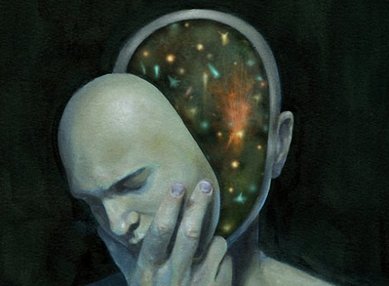 Meditation practice eventually brings us face to face with a profound question about our own identity. As we practice, we notice more and more the repeating loops of habit that form our lives. But is that who we really are? Buddhism teaches us over and over we are not who we think we are. But does that mean there is no self? What about all that work we have done to get to know ourselves? What about ego strength, the true self, individuation? It's confusing! Traditional Buddhist texts describe how consciousness itself creates the world like a dream: something comes into existence that doesn't have inherent form. Contemporary psychology sometimes describes the self as a "soft assembly" or as "multiple self-states." At the same time, we know that it is indeed important to be "born" as a self, to gain self-knowledge, and to feel good about ourselves. When we look into the question of self and identity in contemporary psychology and in spiritual practice, we find it requires us to understand two distinct dimensions of self and no-self. Here at Crimson Gate, we will be taking this up in more detail in our upcoming class, "True Self, False Self, No-Self" starting in September--if you are intrigued, join us! When the Buddha looked into the question of human identity on the night of his awakening, he came to the radical discovery that we do not exist as separate beings. He saw that the human tendency to identify with a separate sense of existence is a root illusion. It causes suffering and removes us from the freedom and mystery of life. In the Buddhist view, we are not separate and fixed beings, but rather a collection of five ever-changing processes: the experience of the physical body, of feelings of like and dislike, of perceptions, of responses, and of the flow of consciousness that experiences them all. Our sense of self arises when we grasp onto or identify with these patterns. The process of identification, of selecting patterns to call “I,” “me,” “myself,” is subtle and usually hidden from our awareness. Thus, in our culture, we might fixate on and identify with the role of being a woman or a man, a good person or a bad person. We might take our childhood history, our narrative of our lives, our heritage as determining who we are. As mental health professionals, we are in an interesting place with these identifications. On the one hand, we know how important it is, for ourselves and for our clients to know "who we are." On the other hand, we see how rigidly people can see themselves, and how limiting this can be. How can we think and experience something fresh about the experience of the self? How can we conceive of a freedom beyond the limitations of the small self while still honoring the importance of identity? We will take up these questions starting in September in our class especially for mental health practitioners on issues related to the self. Join us!
0 Comments
Leave a Reply. |
Details
AuthorMegan Rundel is the resident teacher at the Crimson Gate Meditation Community in Oakland, CA.. Archives
April 2020
Categories
|

 RSS Feed
RSS Feed